#Eugène-Emmanuel Viollet-le-Duc
Explore tagged Tumblr posts
Text
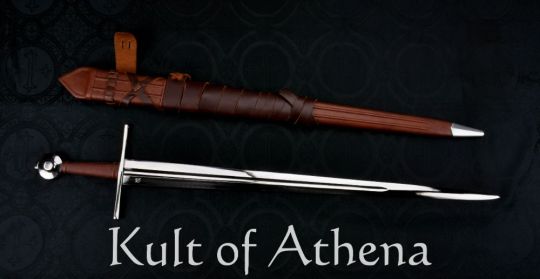
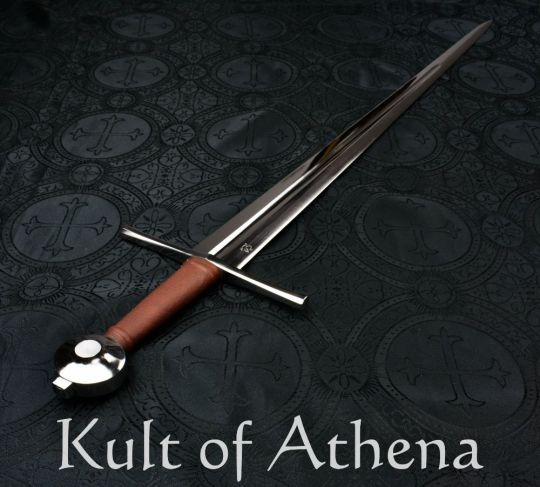
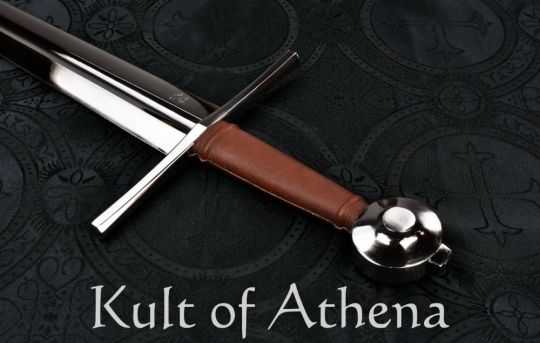
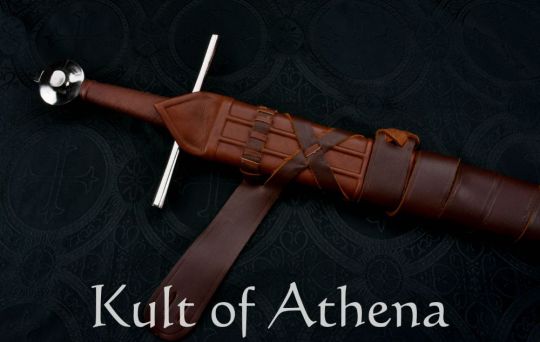
Darksword – The Duke Sword with Integrated Sword Belt
The Duke sword is inspired by an illustration in Eugène Emmanuel Viollet-le-Duc medieval encyclopedia, a masterwork of exposition and illustration. The blade of the Duke is forged from mirror-polished 5160 high carbon steel which is differentially tempered to possess a hardened edge of 60 HRc steel and a flexing, shock absorbing core of 48-50 HRc hardness. The guard and pommel are of steel and the wooden grip is bound in leather. The blade is securely anchored into the hilt with a robust peen on the pommel. Included with the sword is a wood-core scabbard which is tightly bound in leather and completed with an integrated sword belt and a protective steel chape.
If you ask modern day sword collectors who the most famous and influential scholars of the medieval sword were, the typical answer you will get is Ewart Oakeshott (1916-2002). And it’s true – Oakeshott literally wrote the book on medieval sword types, and a whole system of classification (The Oakeshott Typology) is named after him. More advanced collectors may recognize the names Dr. Jan Peterson (1887-1967), who created a typology for classifying Viking swords, or Sir Robert Eric Mortimer Wheeler (1890-1976), who refined Peterson’s typology. Predating any of these scholars, however, is a man whose writing on medieval arms, armor, and architecture dwarfs many later historians’ bibliographies – though he is largely unrecognized by the modern sword collecting world.
Eugène Emmanuel Viollet-le-Duc was born in 1814 in Paris, France. He was an architect by trade, a brilliant one by all accounts, and an inspired artist and illustrator. While the architectural world knows Viollet-le-Duc as an architect, restorer of historical buildings and monuments (including considerable work on Notre-Dame Cathedral and many other famous landmarks), and as the first true theorist of modern architecture, he also wrote and illustrated some of the largest volumes in existence on the medieval sword.
The volumes Viollet-le-Duc wrote are breathtaking in their scope and depth. His extensive writings cover not only descriptions of different medieval swords and armor but tracks and explains their evolution throughout history, and his stunning illustrations compliment his writing expertly. Unfortunately, as his works were not commonly translated into English, the largely-anglophone sword collecting population remains ignorant of these incredible volumes and Viollet-le-Duc’s influence on medieval scholarship. Some translations exist, but copies are notoriously hard to find and prohibitively expensive. In the English-speaking world, many of these works and completely unknown, and the incredible scholarship they contain can only be found by efforts of French-speaking individuals – such as us here at Darksword Armory.
The Duke sword is inspired by an illustration in Eugène Emmanuel Viollet-le-Duc medieval encyclopedia, a masterwork of exposition and illustration. A classic knightly sword, the Duke is designed to resemble the cruciform arming sword so often found in medieval art. The straight guard is expertly sculpted and subtle in its smooth lines. A double-edged, single-fullered blade departs slightly from Viollet-le-Duc’s illustration in that it has a less severe taper and termination. The pommel may appear to be a standard wheel-style pommel with peen block, but has in fact been made slightly oversized to counterbalance the blade. This brings the point-of-balance closer to the guard, resulting in a sword that is startlingly lively in the hand and that flows effortlessly from strike to guard. The Duke is one of our best attempts at recreating the knight’s arming sword, and we hope the great Eugène Emmanuel Viollet-le-Duc would be proud of us.
#Kult of Athena#KultOfAthena#New Item Wednesday#Darksword Armory#The Duke Sword#The Duke Sword with Integrated Sword Belt#sword#swords#weapon#weapons#blade#blades#Medieval Swords#Medieval Weapons#European Swords#European Weapons#Eugène Emmanuel Viollet-le-Duc medieval encyclopedia#Eugène Emmanuel Viollet-le-Duc#5160 High Carbon Steel#Battle Ready#new item#new items
4 notes
·
View notes
Text

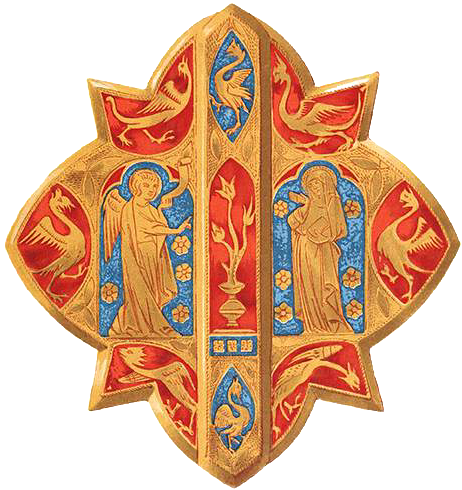
Illustrations by Viollet-le-Duc, Eugène Emmanuel
#Viollet-le-Duc#Eugène Emmanuel#fastener#medieval#13th century#fashion#historical fashion#historical clothing#finery
5 notes
·
View notes
Text

























OATHSWORN KINGDOM GAME
I have decided to put all the Kingdom visual references in a single post.
Tuileries palace photograph, reference for our Senate building. Eugène-Emmanuel Viollet-Le-Duc's "Banquet des Dames dans la salle du spectacle des Tuileries", 1835. Interior reference for our Senate building.
Senator Sophina, arch-sybil of the eyes of smoke, facecast as the doll from Bloodborne. Spaker Weigraf, facecast as Philip Seymour Hoffman. Junior Speaker Draknor: an orangutang with a blanket over their head.
Destiny's Proving Grounds, visual reference for the Tairan Sepulcher.
Mad Men from Mad Men, Brendan posted with "Azar and Marshal". Kevin Holland, facecast for Nine.
Still from The Tragedy of Macbeth (2021), used to gesture at the vibes of several tense conversations.
Still from Spider-Man: Into the Spider-Verse (2018), referencing how Waloot watched Lark. Young Pope smoking, reference for Kael's vibe.
Azar in the Kate Beaton/Hark a Vagrant meme saying "I had fun once, it was awful". Reference to the abilities of Junior Speaker Draknor via Screenshot of the video My Life with Rambo - Part 2
A trio of Weigraf memes, one from me, one from kris, and one from gavin
Dub Bossman posted due to Thar's sudden desire for Dubs. Then Tintin meme about it being Monday (we recorded on Mondays).
Examples of real-life tree shaping to give the vibe of Serikali's furniture.
A trio of memes for when things were darkest. I kept making references to Sophina being Junko Enoshima and Junior Speaker being Monokuma.
Visual references for Judet's big move in the escape.
And one more just for me. just to confirm that Nabain "Palisade" predated FatT Palisade

#oathsworn podcast#oathsworn podcast kingdom spoilers#oathsworn episode 41#oathsworn episode 42#oathsworn episode 43#oathsworn episode 44#oathsworn episode 45#oathsworn episode 46#oathsworn episode 47#oathsworn episode 48#oathsworn episode 49#oathsworn episode 50#oathsworn episode 51#oathsworn episode 52#Sophina Laurentis#Weigraf#Junior Speaker Draknor#Nine#Azar Born of Draknor#Judet the Bladesinger#band of blades#actual play#podcast#ttrpg#long post
0 notes
Text
The Timeless Majesty of Notre-Dame Cathedral
The Timeless Majesty of Notre-Dame Cathedral Notre-Dame Cathedral, also known as Notre-Dame de Paris, stands as one of the most iconic and enduring symbols of French Gothic architecture. Located on the Île de la Cité in the heart of Paris, this medieval Catholic cathedral has witnessed centuries of history, art, and culture. Its construction began in 1163 under the direction of Bishop Maurice de Sully and was largely completed by 1260, though it has undergone numerous modifications and restorations over the centuries.To get more news about notre-dame cathedral, you can visit shine news official website.
Architectural Marvel Notre-Dame is renowned for its pioneering use of the rib vault and flying buttress, which allowed for the creation of its enormous and colorful rose windows. These windows, particularly the north and south rose windows, are masterpieces of stained glass art, depicting biblical scenes and saints in vibrant hues. The cathedral’s façade is adorned with intricate sculptures, including the famous Gallery of Kings, which features 28 statues of Judean kings.
The cathedral’s twin towers, standing at 69 meters (226 feet) tall, offer a breathtaking view of Paris. Visitors can climb the 387 steps to the top, where they are greeted by the iconic gargoyles and chimeras that have become synonymous with Notre-Dame. These stone creatures, designed to ward off evil spirits, add to the cathedral’s mystical allure.
Historical Significance Throughout its history, Notre-Dame has been the site of numerous significant events. In the 1790s, during the French Revolution, the cathedral suffered extensive desecration, with much of its religious imagery damaged or destroyed. However, it was restored in the 19th century under the supervision of architect Eugène Viollet-le-Duc, who added the now-famous spire.
One of the most notable events in Notre-Dame’s history was the coronation of Napoleon Bonaparte as Emperor of France in 1804. The cathedral has also hosted the funerals of several French presidents and other dignitaries. In 1944, the Liberation of Paris from German occupation was celebrated within its walls.
The Fire of 2019 On April 15, 2019, a devastating fire broke out at Notre-Dame, causing significant damage to the roof and spire. The world watched in horror as flames engulfed the historic structure. However, thanks to the heroic efforts of firefighters and the resilience of the cathedral’s stone construction, much of the main structure, including the iconic towers and rose windows, was saved.
The fire sparked a global outpouring of support, with donations pouring in from around the world to aid in the restoration efforts. French President Emmanuel Macron vowed to rebuild Notre-Dame, and restoration work began almost immediately. The goal is to restore the cathedral to its former glory by 2024, in time for the Paris Olympics.
Cultural Impact Notre-Dame has not only been a place of worship but also a source of inspiration for artists, writers, and musicians. Victor Hugo’s 1831 novel “Notre-Dame de Paris” (known in English as “The Hunchback of Notre-Dame”) brought the cathedral to the forefront of popular culture. The novel’s success led to increased interest in the cathedral and ultimately contributed to its 19th-century restoration.
The cathedral’s grandeur and mystique have also made it a popular setting for films, books, and other works of art. Its bells, immortalized in Hugo’s novel, continue to ring out over Paris, a testament to the enduring legacy of this architectural masterpiece.
Conclusion Notre-Dame Cathedral is more than just a building; it is a symbol of the resilience and creativity of the human spirit. Its architectural innovations, historical significance, and cultural impact make it a true marvel of the medieval world. As restoration efforts continue, Notre-Dame stands as a beacon of hope and a reminder of the timeless beauty that can be achieved through dedication and craftsmanship.
0 notes
Text
Reliquary
About 1851 Eugène Emmanuel Viollet-le-Duc (French, 1814-1879) Made by Louis Bachelet (French, active 1851-about 1880) Paris Gilt bronze over wooden support Restricted gift of Mary Kathryn Harrigan and the Thomas W. Dower Foundation, 2016.118 In the early 1800s, in the wake of the destruction caused by the French Revolution caused by the France set about repairing their buildings and restoring their treasuries. Eugène Viollet-de-Duc, France’s foremost 19th-century architect and the restorer of the cathedral of Notre Dame de Paris, designed this reliquary as a prototype; therefore it never contained relics or was dedicated to a specific saint. This is one of the few surviving relatives by Viollet-le-Duc, and its architectural design and decorative vocabulary (including pinecones as symbols of eternity) reveal his thorough grounding in medieval art. A relevant example from the Art Institute’s collection is illustrated at right. Model Chalice About 1849 Designed by Augustus Welby Northmore Pugin (English, 1812-1852) Made by John Hardman and Company (English, 1838-2008) Birmingham, England Gilt base metal, enamels, and semiprecious stones Bessie Bennett Endowment, 1981.640 These two chalice span the length of the career of A. W. N. Pugin, the foremost proponent of the Gothic Revival style in the 19th-century England. He designed the chalice on the right, which reflects the eclecticism and inventiveness of the early Gothic Revival style, when he was just 15 years old.
0 notes
Text
0 notes
Text
Eugène Samuel Grasset (25 May 1845 – 23 October 1917) was a Swiss decorative artist who worked in Paris, France in a variety of creative design fields during the Belle Époque. He is considered a pioneer in Art Nouveau design.
Art Nouveau (lit. 'New Art') is an international style of art, architecture, and applied art, especially the decorative arts. It was often inspired by natural forms such as the sinuous curves of plants and flowers. Other characteristics of Art Nouveau were a sense of dynamism and movement, often given by asymmetry or whiplash lines, and the use of modern materials, particularly iron, glass, ceramics and later concrete, to create unusual forms and larger open spaces. It was popular between 1890 and 1910 during the Belle Époque period, and was a reaction against the academicism, eclecticism and historicism of 19th century architecture and decorative art.
One major objective of Art Nouveau was to break down the traditional distinction between fine arts (especially painting and sculpture) and applied arts. It was most widely used in interior design, graphic arts, furniture, glass art, textiles, ceramics, jewellery and metal work. The style responded to leading 19-century theoreticians, such as French architect Eugène-Emmanuel Viollet-le-Duc (1814–1879) and British art critic John Ruskin (1819–1900). In Britain, it was influenced by William Morris and the Arts and Crafts movement. German architects and designers sought a spiritually uplifting Gesamtkunstwerk ('total work of art') that would unify the architecture, furnishings, and art in the interior in a common style, to uplift and inspire the residents.
The first Art Nouveau houses and interior decoration appeared in Brussels in the 1890s, in the architecture and interior design of houses designed by Paul Hankar, Henry van de Velde, and especially Victor Horta, whose Hôtel Tassel was completed in 1893. It moved quickly to Paris, where it was adapted by Hector Guimard, who saw Horta's work in Brussels and applied the style to the entrances of the new Paris Métro. It reached its peak at the 1900 Paris International Exposition, which introduced the Art Nouveau work of artists such as Louis Tiffany. It appeared in graphic arts in the posters of Alphonse Mucha, and the glassware of René Lalique and Émile Gallé.
From Britain, Belgium and France, Art Nouveau spread to the rest of Europe, taking on different names and characteristics in each country (see Naming section below). It often appeared not only in capitals, but also in rapidly growing cities that wanted to establish artistic identities (Turin and Palermo in Italy; Glasgow in Scotland; Munich and Darmstadt in Germany), as well as in centres of independence movements (Helsinki in Finland, then part of the Russian Empire; Barcelona in Catalonia, Spain).
By 1914, with the beginning of the First World War, Art Nouveau was largely exhausted. In the 1920s, it was replaced as the dominant architectural and decorative art style by Art Deco and then Modernism. The Art Nouveau style began to receive more positive attention from critics in the late 1960s, with a major exhibition of the work of Hector Guimard at the Museum of Modern Art in 1970.
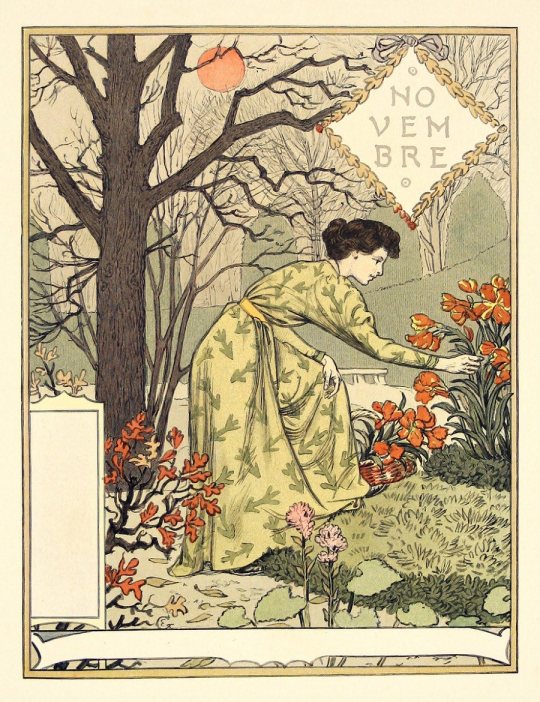
Eugène Grasset.
400 notes
·
View notes
Photo





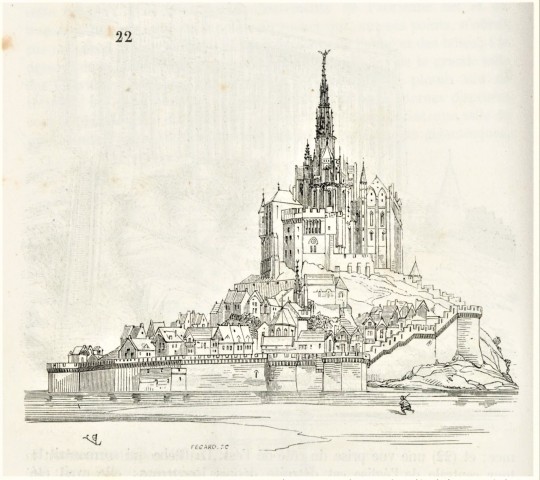



Decorative Sunday
A few months ago we shared plates from the Industrial and Applied Arts publication L’Art Pour Tous. That magazine has two direct connections to the subject of today’s post, the influential Dictionnaire Raisonné de L’architecture Française. The magazine’s director, Claude Sauvegeot, was a student of the Dictionaire’s author, architect and medievalist Eugène-Emmanuel Viollet-le-Duc, and was published by A. Morel, who took up editorship of the Dictionnaire after the death of the original publisher, Balthazar Bance.

The ten volumes that comprise the Viollet-le-Duc’s Dictionnaire were published in Paris from 1854 through 1868, with Bance publishing the first six volumes. The Dictionary’s entries are illustrated by hundreds of wood engravings. Bance’s son Albert, still a minor at the time of his father’s death, was slated to succeeded him at the helm of the multi-generational Bance publishing business. However, Balthazar’s leadership of the Bance firm had been been marred by financial hardships, and a portion of Bance’s commercial contracts were actioned off, including the rights to the Dictionnaire.
Those publishing rights were snapped up by August-Jean Morel. Morel went on to publish the last four volumes, as well as establish an important relationship with Viollet-le-Duc. Founded by Morel in the late 1840′s, Veuve A. Morel et Cie. and its associated bookshop specialized in finely produced books on art, architecture, and design. The firm remained operational for decades after Morel’s death in 1869, under the management of Morel’s widow and with active involvement from Viollet-le-Duc himself.
You can find more Decorative Sunday posts here.
-Olivia, Special Collections Graduate Intern
#Decorative Sunday#Dictionnaire Raisonné de L’architecture Française#Eugène-Emmanuel Viollet-le-Duc#Viollet-le-Duc#August Morel#A. Morel#Veuve A. Morel et Cie.#Bance#Balthazar Bance#architecture#dictionary of french architecture#decorative plates#wood engravings#olivia
51 notes
·
View notes
Photo











postcards of Chimère
Notre Dame, Paris
c.1900
In 1831 the publication of Victor Hugo’s The Hunchback of Notre Dame drew attention to Paris’s crumbling cathedral. Hugo had set the novel in the Middle Ages, and gave it an elaborate plot centering on the massive structure. In this story, the cathedral was every bit as alive as the human characters. The popularity of the novel lead the French government to hold a competition for plans to restore the deteriorating twelfth century Cathedral.
In 1843 architects Eugène-Emmanuel Viollet-le-Duc and Jean Baptiste Lassus proposed a renovation plan for Notre Dame. The two architects’ plans for the won the competition and they were awarded the commission. Work began in 1845 and was completed 1864. Though they began the collaboration equally, Lassus's untimely death would leave Viollet-le-Duc in sole command of the Gothic Revival restoration design.
Though Viollet-le-Duc’s restoration comprised of many of the Cathederal’s architectural aspects (including stained glass windows, numerous statuary, and the spire) the restored elements that most clearly speak of 'Gothic scholarly fancy' are probably the chimera on the upper balustrade, which, like the gargoyles, seem to have been wholly the inventions of Viollet-le-Duc. The original medieval gargoyles had long since begun to disintegrate and fall to the ground, prompting officials to remove those that remained for safety.
The replacement gargoyles by Viollet-le-Duc — his chimères, as he called them, quickly became not only icons of Gothic fantasy, but archetypal gargoyles. In fact, however, they are neither Gothic nor gargoyles, but products of the nineteenth-century imagination. In Greek mythology, the chimera is a creature with a lion’s head, a goat’s body and a dragon’s tail. In Viollet-le-Duc’s scheme, however, a chimera was any imaginary beast that exhibited features drawn from several different animals. These grotesque figures have long fascinated visitors and scholars alike. There were fifty-four of them and though they help to unify the architectural restoration not everyone approved of Viollet-le-Duc's design: some went so far as to call him a 'disastrous restorationist'. But on the whole the French architect's reasoned, scholarly and well documented work on the famous Cathedral of Notre Dame – and even the criticisms it provoked – served to set a new benchmark for the architects who succeeded him.
#art by others#other's artwork#stone#limestone#postcard#sculpture#Chimère#Gothic Revival#Eugène-Emmanuel Viollet-le-Duc#Notre Dame
79 notes
·
View notes
Text
La estación de Metro de Chamberí | Cristina García-Rosales
Con este pretexto pretendo ahondar en la arquitectura de Palacios, el arquitecto que la diseñó, así como pasear entre sus edificios, la mayor parte de ellos en Madrid.
Madrid es un territorio muy amplio, una ciudad grande. Y aunque este ciclo trata fundamentalmente de la arquitectura en el barrio de Chamberí, vamos también a pasearnos por edificios de otros barrios.
El barrio está dividido en varios sectores o sub barrios que son Vallehermoso, Rios Rosas, Gaztambide, Arapiles, Trafalgar y Almagro. Es un barrio que pertenece al Ensanche Madrileño del Plan Castro. Un barrio donde conviven vecinos de clase media-alta. La Plaza de Chamberí es por donde se accede a la estación fantasma.
[...]
#Ángel Chueca Sainz#Ángel García Díaz#Antonio Palacios#arquitectura española#arquitectura gallega#arquitectura monumental#Art Deco#artes plásticas#bellas artes#ciudad#conferencia#Cristina García-Rosales#Eugène-Emmanuel Viollet-le-Duc#filosofía#Galicia#historia#Jean-Pierre Lescourret#Joaquín Otamendi Macheabarrena#literatura#Madrid#Otto Koloman Wagner#parainfraestructuras#urbanismo
0 notes
Photo

Chair frame by the firm of Joseph-Pierre- François Jeanselme ca. 1850 | Armchair | French, Paris | The Metropolitan Museum of Art
The overall design of this armchair is taken directly from elements used in Gothic architecture, as are the prominent ogee-arch back surmounted by carved leaves and flanked by spandrels cut with trefoils, and the molded details of the posts, arms, supports, and legs, as well as the pierced skirt imitating tracery. The original leather upholstery has a pressed design showing a pattern of flowering scrolls in red, rust, gold, and black (originally green); the outer back is covered with a gold-colored silk glued over green serge. Although the Gothic Revival is primarily associated with English tastes, the style also appeared in France during King Louis-Philippe's reign (1830–48). While in exile in England, Louis-Philippe developed a taste for English styles. The Gothic was also promoted by the influential architect and theorist Eugène-Emmanuel Viollet-le-Duc, a restorer of French Gothic cathedrals.
#french design#gothic revival#carved wood#19th century#chair#armchair#throne#joseph pierre francois jeanselme
37 notes
·
View notes
Text
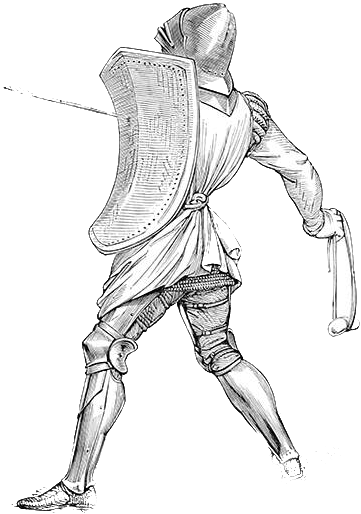
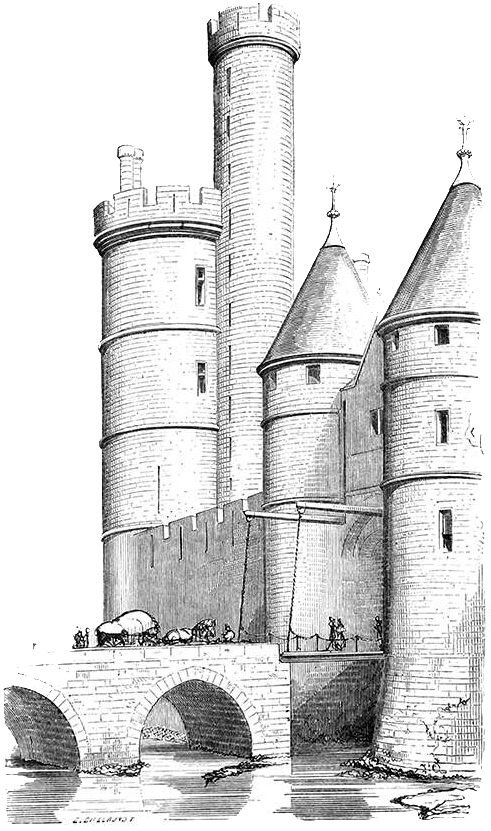
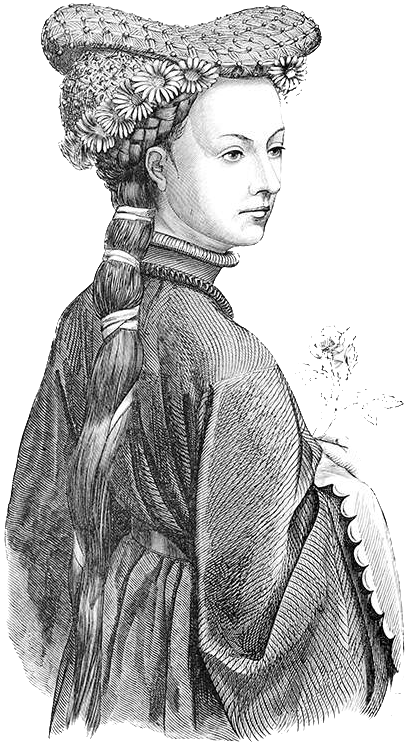
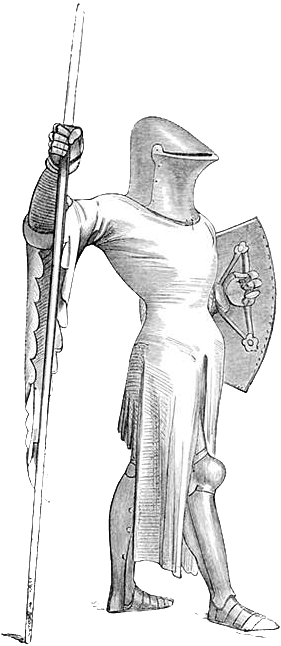
Illustrations by Viollet-le-Duc, Eugène Emmanuel
3 notes
·
View notes
Photo





Views of Paris from the top of the Centre Pompidou:
1) Eiffel Tower; 2) Tour Saint-Jacques, the Conciergerie and Tour Montparnasse; 3) Notre Dame, the Pantheon and Saint-Étienne-du-Mont; 4) Sacré-Cœur and Montmartre; 5) La Défense in the distance and Saint-Eustache on the right.
I did not visit the church of Saint-Eustache, but I found a wonderful quote from Eugène Emmanuel Viollet-le-Duc, a 19th-century architect who restored many prominent medieval landmarks in France. He considered Saint-Eustache to be "a confused pile of debris borrowed from all sides, without connection and without harmony, a kind of Gothic skeleton covered with Roman rags sewn together like the pieces of a harlequin habit."
So, he was not a fan.
Photos by Charles Reeza, October 2021
#Paris landmarks#architecture#architecture criticism#great quote#church#Viollet-le-Duc#architect#travel photos#Europe
20 notes
·
View notes
Photo

Perspectival Cross-Section of a Venetian Palace - Eugène-Emmanuel Viollet-le-Duc (1830–79)
In 1836 and 1837 the young architect Viollet-le-Duc traveled through Italy and became especially enamored with Venice, which he greatly preferred over Rome. He admired the way the principles of the Byzantine and the Gothic styles had merged with the classical tradition in Venetian architecture and how the overabundant Rococo seemed to have had little influence. Years later, when he had become a true champion of Neo-Gothic architecture, he treated Venice in his famous publication Entretiens sur l’architecture (Discourses on Architecture). In this preparatory sketch for plate 32, Le-Duc opens up the faade of the building to show the interior structure of a Venetian palace.
Via: Metropolitan Art Museum
191 notes
·
View notes
Photo

Eugène Emmanuel Viollet-le-Duc, Vue Intérieure de la Chapelle Palatine à Palerme, April 23, 1836
83 notes
·
View notes
Photo

Fourteenth-Century soldier wearing a bascinet, a mail coif extending to the shoulders, a surcoat, and wielding a longsword with two hands. by Emmanuel Viollet-le-Duc, Eugène, 1874.
3 notes
·
View notes